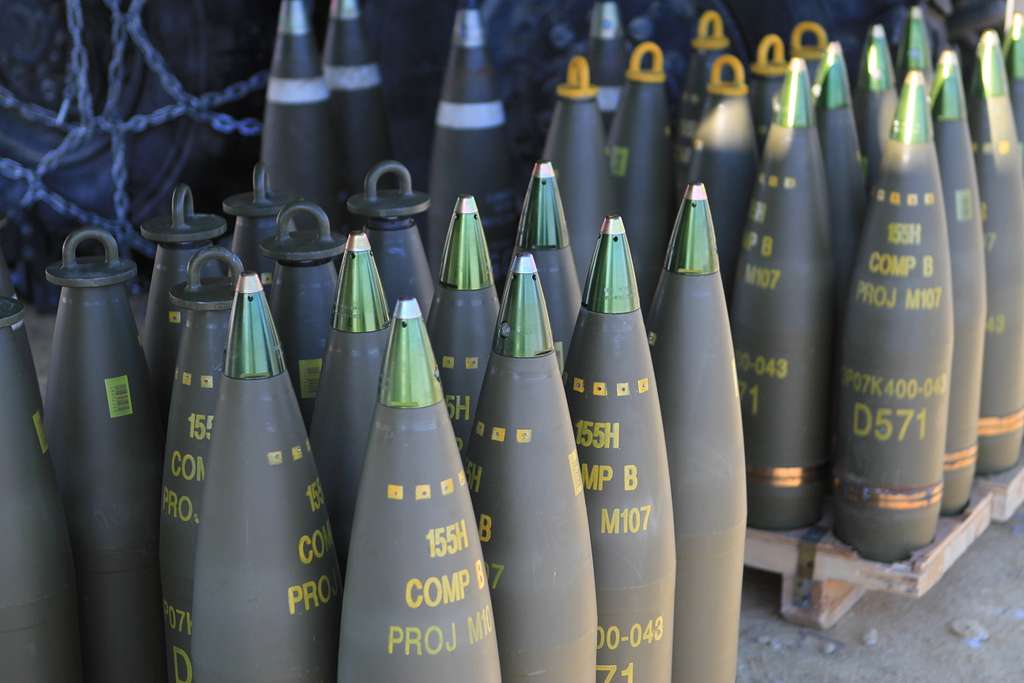
A significant cache of artillery shells, including 50,000 units of 105mm, 20,000 units of 155mm, and 5,000 units of 203mm, is reportedly within the purview of Washington. The U.S. and Greece are currently in talks over the sale of these 75,000 artillery shells, with Ukraine being the intended recipient. However, the transaction appears to necessitate the involvement of a third party.
Despite the conflict in Ukraine not being as prominent in the media, the need for ammunition remains critical. The Ukrainian forces continue to depend heavily on Western military aid, making it unsurprising that the U.S. is once again stepping in to address their urgent ammunition requirements.
As per a Greek publication, the deal is valued at a substantial $47 million, underscoring Greece’s historical role in supplying such ammunition to Ukraine. Notably, while previous transactions occurred in the “secondary market,” this deal is proposed as a “third party” agreement.
From a commercial perspective, the deal faces no significant obstacles, primarily due to the secure nature of intergovernmental agreements. The terms being finalized by the Greek negotiators in the concluding stages of the deal are reportedly favorable.
In terms of technical approval, or more specifically, endorsement by military experts, the deal has been given the go-ahead as the missiles were found to be “user-friendly, no operation required.” It’s noteworthy that Greece has been a major supplier of this type of ammunition to Ukraine since the onset of the conflict. In this case, however, the prices align with those in the secondary market.
The outcome of these negotiations has proven beneficial for Greece, not only securing a valuable military resource but also indicating that munitions production could be a profitable venture. This aspect, however, is pertinent mainly to the defense industry rather than the armed forces, underlining the occasional need for a commercial focus within this sector.
Shifting our focus to the business aspect, let’s consider a recent fact shared by NATO. As of the end of October, taking into account the average cost of munitions involved in the “Greek deal,” Athens is projected to spend roughly $626.66 per unit. This figure, however, should be taken with a grain of caution as factors such as caliber and manufacturing methods can influence the final cost. Nonetheless, this baseline provides a context for the subsequent information.
In a startling revelation, Admiral Rob Bauer, the current head of the NATO military committee, disclosed the current prices for conventional 155-mm artillery ammunition at the end of October. Brace yourself, as each unit is now priced at a staggering 8000 thousand euros.
This quoted “price” has sent ripples through the community, significantly exceeding the rates derived from last year’s contract with Rheinmetall. According to this previous contract, the price for one 155-mm projectile was a much lower 3.3 thousand euros.
The reasons behind this dramatic price surge from 2 thousand euros in 2021 to quadruple that amount are quite clear. The increasing demand for artillery ammunition against their limited production has resulted in a significant deficit.
If the U.S. can finalize a deal with Athens for the purchase of 75,000 munitions required by Ukraine, it would indeed be a cause for celebration in Kyiv and Washington. The potential deal’s price and the current situation in Europe justify this optimism. Let’s examine the situation:
Ukraine’s Foreign Minister, Dmytro Kuleba, expressed his doubts in mid-November about the European Union’s [EU] ability to fulfill its commitment. The EU had pledged to assist Ukraine with one million artillery shells by March 2024, but this target now seems uncertain.
Kuleba attributes this potential shortfall to a range of issues, from obstacles in military production to bureaucratic hurdles. This was brought up in response to a recent Bloomberg report, which cast doubt on the EU’s progress, suggesting that they are unlikely to deliver their pledge of 1 million 155mm artillery shells to Ukraine on time.
The Bloomberg report discloses that Ukraine has only received approximately 30% of the promised quantity so far. Despite existing contracts, it appears doubtful that the initial plan will be executed as scheduled. “The Bloomberg reports are unfortunately correct. We are facing challenges and, to be honest, we are sounding the alarm,” confirmed Kuleba.
In a somewhat contradictory scenario, Russia continues to relocate armaments in quantities significantly exceeding those transferred to Ukraine. However, there’s a logical explanation for this.
Firstly, despite suggestions from Europe and the U.S. that economic sanctions against Russia are having the intended effect, Russian ammunition production seems largely unaffected. In fact, the Russian military has been seen using advanced 122mm artillery rounds. To reduce expenses, Moscow has chosen to bypass the costly final shell painting process, instead deploying the artillery in its raw ‘green’ state.
Furthermore, it’s important to note that Russia has substantial stockpiles. Contrary to speculations by British intelligence last year about a potential end to the war due to an alleged Russian ammunition shortage, the evidence suggests a different scenario. Every day sees the production of 1,000 FPV drones and the delivery of 15,000 tons of munitions and fuel to the frontline. Russia reportedly has four million ammunition in its open warehouses alone, with unknown quantities stored in hidden or underground facilities. Additionally, it’s worth noting that the Russian Army has received over 350,000 artillery rounds from North Korea.




